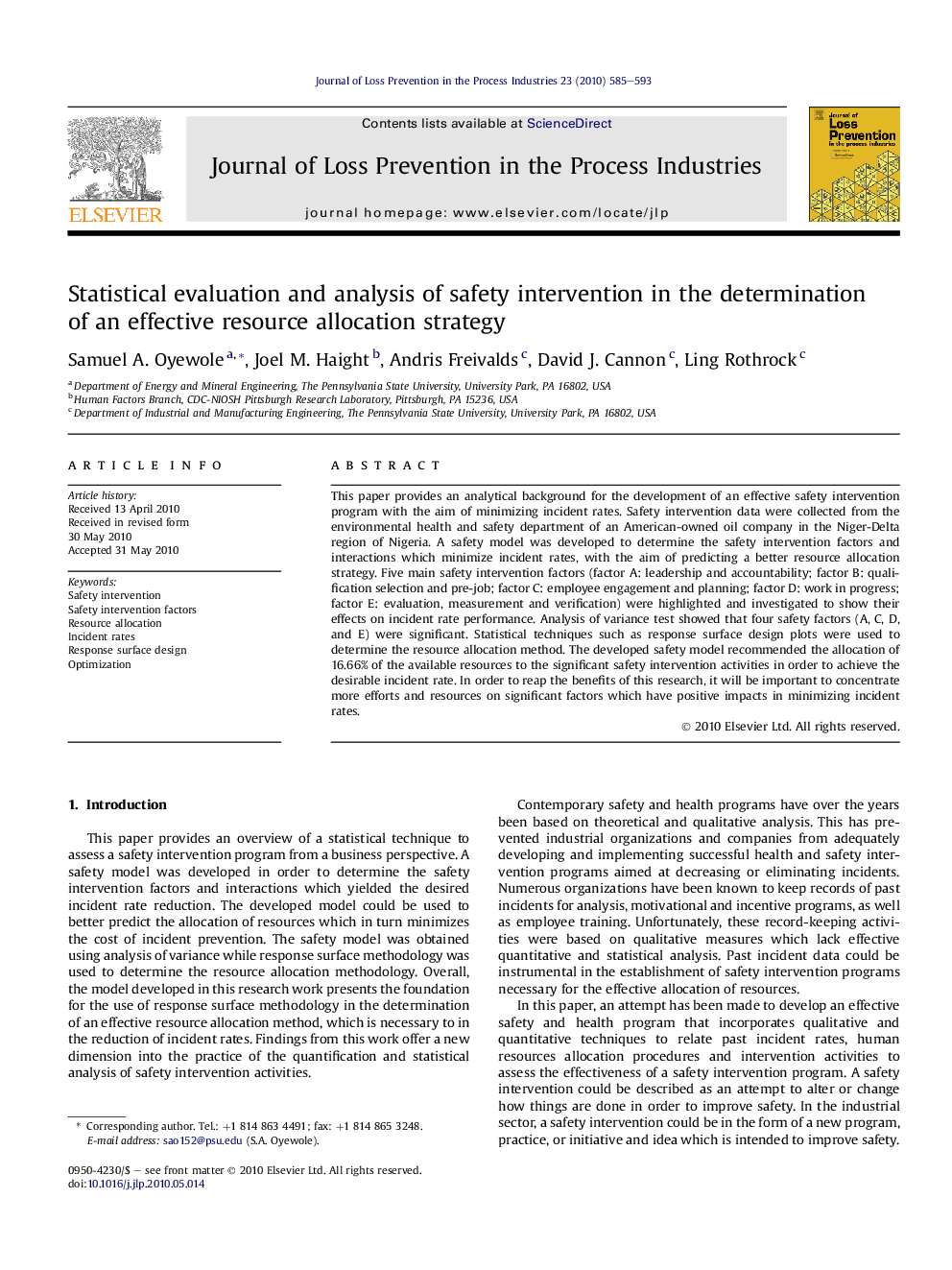| Article ID | Journal | Published Year | Pages | File Type |
|---|---|---|---|---|
| 586612 | Journal of Loss Prevention in the Process Industries | 2010 | 9 Pages |
This paper provides an analytical background for the development of an effective safety intervention program with the aim of minimizing incident rates. Safety intervention data were collected from the environmental health and safety department of an American-owned oil company in the Niger-Delta region of Nigeria. A safety model was developed to determine the safety intervention factors and interactions which minimize incident rates, with the aim of predicting a better resource allocation strategy. Five main safety intervention factors (factor A: leadership and accountability; factor B: qualification selection and pre-job; factor C: employee engagement and planning; factor D: work in progress; factor E: evaluation, measurement and verification) were highlighted and investigated to show their effects on incident rate performance. Analysis of variance test showed that four safety factors (A, C, D, and E) were significant. Statistical techniques such as response surface design plots were used to determine the resource allocation method. The developed safety model recommended the allocation of 16.66% of the available resources to the significant safety intervention activities in order to achieve the desirable incident rate. In order to reap the benefits of this research, it will be important to concentrate more efforts and resources on significant factors which have positive impacts in minimizing incident rates.
